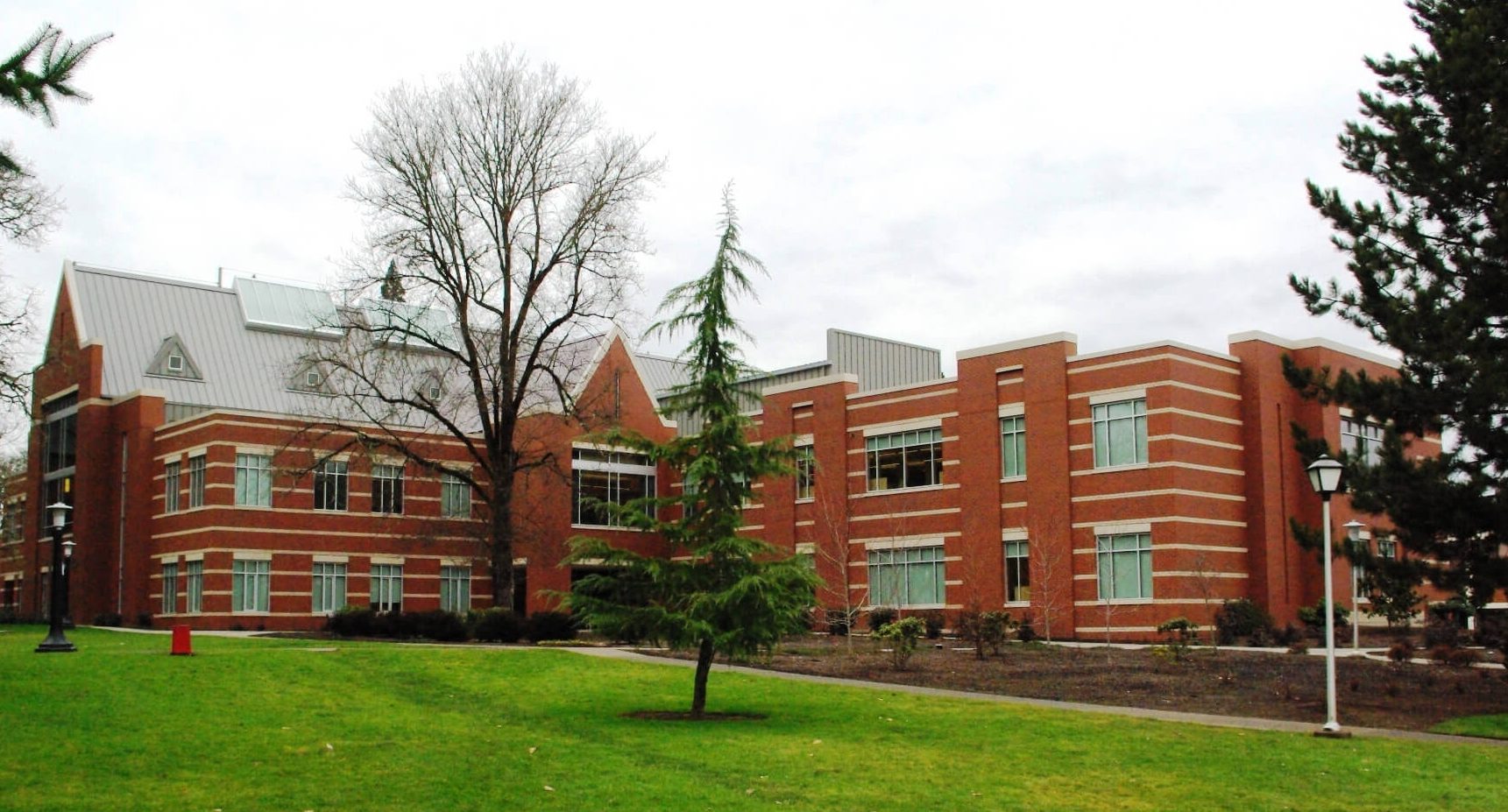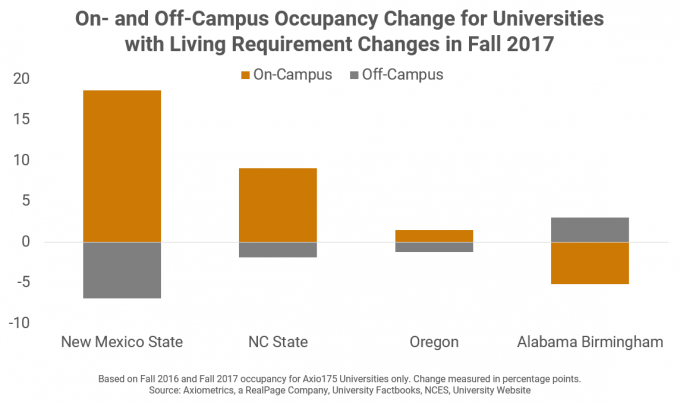University Living Requirements Affect Off-Campus Student Housing

In recent years, several universities have changed on their policies to require certain undergraduates to live on campus. Most of the recent policy changes affect freshmen, but some affect sophomores and juniors. The requirements are aimed at enhancing student experience and academic achievement. But such changes in living requirements have shown to impact the off-campus student housing market.
Among the 175 core universities tracked by Axiometrics, a RealPage company, 101 had living requirements in place for the fall 2018 semester. The majority of these schools – 74 – require freshmen to live on campus, while living requirements at 26 of these universities also include sophomores. One – Notre Dame – requires juniors live on campus.
Notre Dame’s new junior residency requirement makes the university one of four that are implementing new on-campus living requirements this fall. The other three are Louisiana State (none to freshman), San Diego State University (freshman to sophomore) and University of New Mexico (none to freshman). Last year, Notre Dame required only freshmen to live on campus.
How might these requirements impact the off-campus student housing markets at each school? Changes implemented at four schools in for fall 2017 semester provide some insights. On average, those schools saw occupancy among on-campus housing increase 690 basis points (bps), while off-campus occupancy took a hit of 140 bps.

While the group of four schools saw occupancy patterns shift with on-campus living requirements, the impacts at each individual campus varied.
New Mexico State University
For instance, New Mexico State University changed from not having an on-campus living requirement prior to 2017 to one requiring all students with freshman status to live in university-owned housing. That year, occupancy in the school’s on-campus housing reached 90.7% – a 1,860 bps increase from the previous fall. With enrollment decreasing since 2011 at an average rate of 3.6%, and a 2017 freshman class of 2,157 students, the increase of on-campus occupancy can be partially attributed to the change in living requirement. Additionally, the off-campus student housing supply available for NMSU students that fall showed a decrease of about 690 bps in occupancy from August 2016 to August 2017.
North Carolina State University
North Carolina State University also implemented living requirements for freshmen in fall 2017. The school experienced an average of 88.7% occupancy in 2015 and 2016, when it added over 1,100 new beds. Additionally, in 2017 the university added over 250 more beds to its on-campus supply, bringing the total on-campus bed count to almost 9,200. That year – the first that freshmen were required to live on campus – the school experienced 97.5% occupancy, a 910 bps increase from the previous fall. While the new living requirement in 2017 may be one of the reasons for the occupancy increase, enrollment was also a factor. After a -0.6% average enrollment change between 2011 and 2016, enrollment increased by 677 students, or 2.0%, in 2017.
However, even with enrollment growth, NC State saw an occupancy decrease among off-campus housing. The more than 10,400 privately-owned beds experienced an average occupancy of 95.0% in August 2017, down 190 bps year-over-year.
University of Oregon
University of Oregon also began to require freshman to live on campus in fall 2017, when occupancy for on-campus housing reached 93.9%, only 150 bps above the occupancy of fall 2016. The small increase in occupancy relative to living requirement change may be partially attributed to recent enrollment growth. The school has seen a consistent decrease in enrollment since 2013, with declines averaging 1.4%. In 2017, enrollment declined by 721 students. Additionally, the slight increase in occupancy in 2017 was also impacted by the more than 200 new beds added to the on-campus housing supply, which totaled around 4,150 beds. The school’s net on-campus demand increased by 263 beds, well above the historical annual average demand of 25 beds.
The more than 6,700 off-campus beds at U of O may have also felt the impact of new living requirement and new on-campus supply. Privately-owned student housing occupancy averaged 87.5% in 2017, 120 bps below the August 2016 average occupancy.
University of Alabama at Birmingham
The University of Alabama at Birmingham saw a slight increase in demand for on-campus beds in fall 2017 after the freshman living requirement was implemented. In view of the living requirement change, growing freshmen class and overall enrollment growth, the university increased its on-campus housing supply by about 270 beds in 2017, bringing the total to 3,100. Due to such an increase in beds, total occupancy in relation to 2016 occupancy saw a decrease, going from over 100% to 95.3%. Based on 2017 total on-campus supply, occupancy was 30 bps above functional capacity (95%). Additionally, demand for on-campus housing increased by 111 beds, above the historical average demand of 103 beds prior to fall 2017.
Privately-owned student housing at UAB also experienced an increase in demand in August 2017. Average off-campus housing occupancy increased by 300 bps – to 95.7% – compared to August 2016. Though such occupancy is not attributed to leases from freshman, the increase is in part due to overall UAB’s enrollment growth. Enrollment at the school has seen an average growth of 2.9% since 2009, when it turned positive. In 2017, overall enrollment increased by 7.0%, or 1,367 students.





